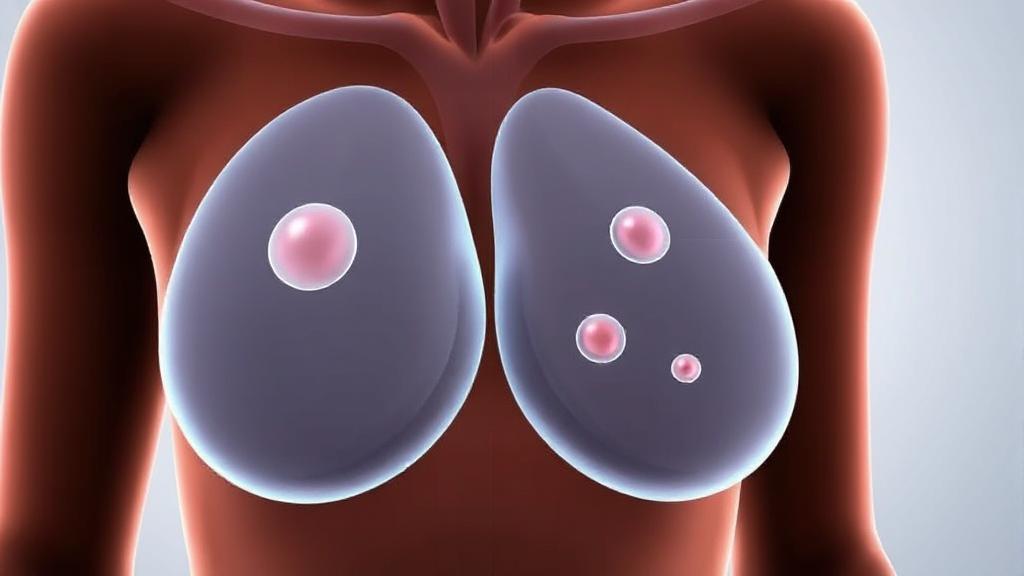Understanding Breast Cysts
Breast cysts are fluid-filled sacs within the breast tissue that are usually benign and commonly found in women aged 35 to 50. They can vary in size and may cause discomfort or pain, especially before menstruation. Understanding their typical locations can help with breast self-awareness and early detection of changes.
Common Locations
1. Upper Outer Quadrant
- Most common location (approximately 50-60% of breast cysts)
- Contains approximately 40-50% of breast tissue
- Extends from the nipple to the armpit
- Higher concentration of glandular tissue
- More susceptible to cyst formation
2. Upper Inner Quadrant
- Second most common location
- Contains approximately 15-20% of breast tissue
- Generally easier to detect during self-examination
- Contains significant glandular tissue
3. Lower Outer Quadrant
- Third most frequent area
- Contains approximately 20-25% of breast tissue
- May be confused with normal breast tissue
- Can be more difficult to detect in larger breasts
4. Lower Inner Quadrant
- Least common location
- Contains approximately 10-15% of breast tissue
- Usually easier to identify during clinical examination
- May be more noticeable when lying down
5. Central Area
Cysts can also form in the central area of the breast, around the nipple and areola. This region is rich in glandular tissue, which can sometimes lead to the formation of cysts.
Factors Influencing Cyst Location
Hormonal Changes
- Hormonal fluctuations, particularly during menstrual cycles
- Estrogen plays a significant role in cyst formation
- Areas with more hormone-sensitive tissue
Physical Factors
- Breast density
- Physical pressure from bra straps or tight clothing
- Previous trauma or surgery
- Age-related changes
Detection and Diagnosis
"Regular breast self-examination is crucial for early detection of changes in breast tissue, including cysts. Familiarity with your normal breast texture helps identify unusual changes." - American Cancer Society
Self-Examination Techniques
- Visual inspection
- Manual examination while standing
- Manual examination while lying down
- Examination with arms raised
Medical Imaging
Healthcare providers may use various diagnostic tools:
Prevention and Management
Most breast cysts don't require treatment unless they are large or painful. However, certain lifestyle factors may help reduce their occurrence:
- Maintaining a healthy weight
- Limiting caffeine intake
- Wearing properly fitted bras
- Regular exercise
- Adequate vitamin D intake
For more information about breast health and cyst management, visit the National Breast Cancer Foundation, Mayo Clinic, or Breastcancer.org.
When to Seek Medical Attention
Changes in any area of the breast should be evaluated by a healthcare provider, particularly if you notice:
- A new lump or cyst
- Changes in size or shape
- Pain or tenderness
- Skin changes
- Nipple discharge
